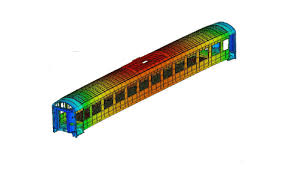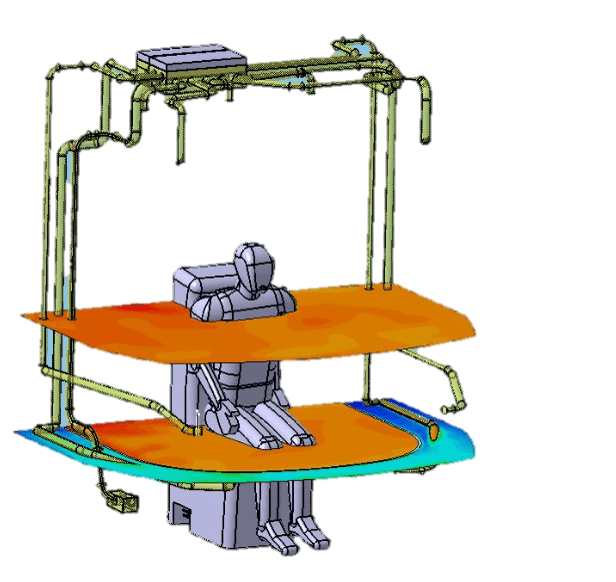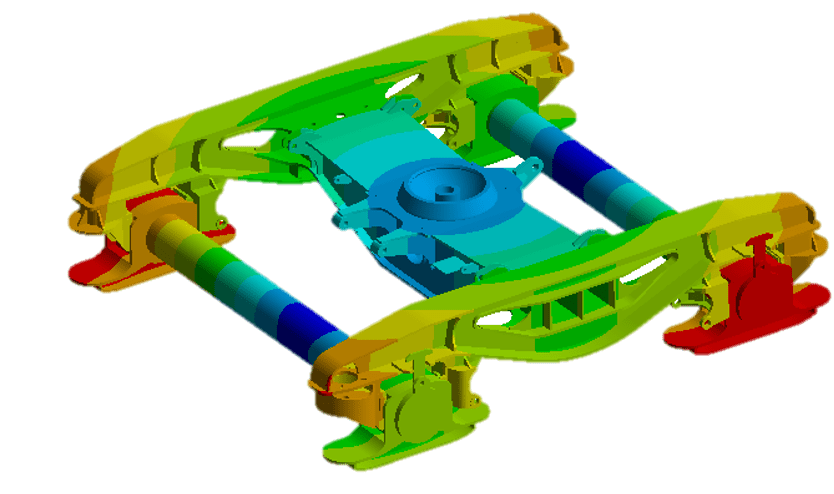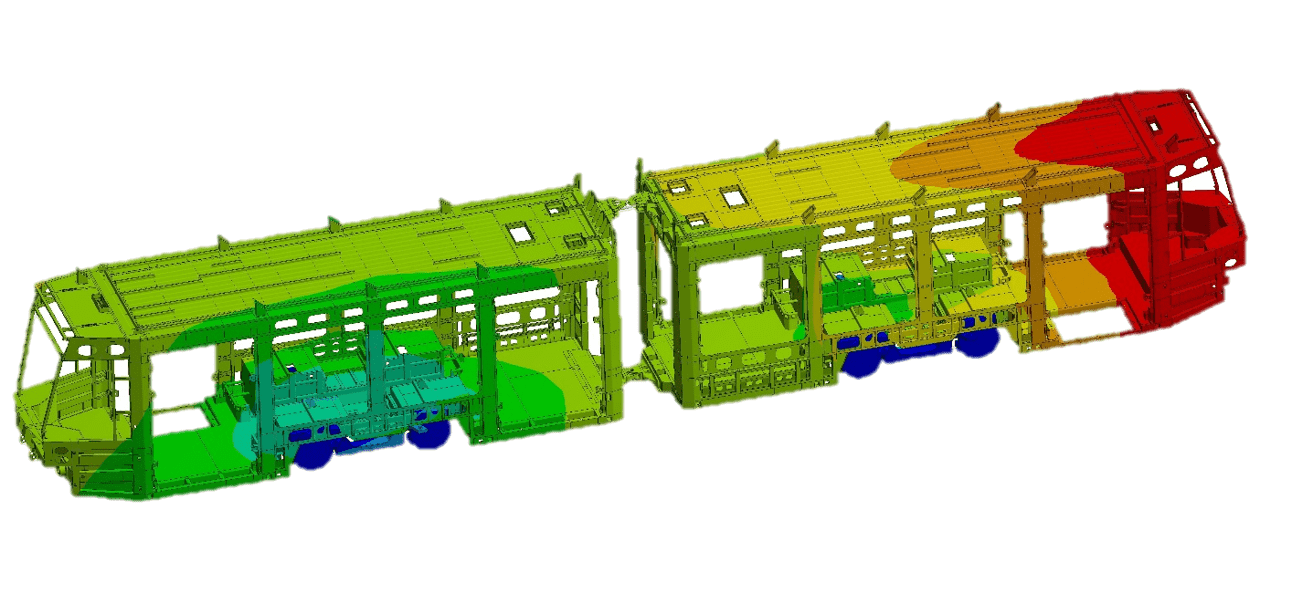Engineering Simulations for Railway Systems with Ansys: Analysis Types, Software Tools, and Application Areas
The Importance of Simulation in Railway Systems
Railway systems — including high-speed trains, metros, and trams — must operate with exceptional safety and performance standards. In the engineering design processes of such complex systems, digital simulation technologies have become indispensable, replacing costly and time-consuming physical prototyping.
This is where Ansys software solutions come into play, supporting every phase from design to optimization.
In this blog post, we will provide a detailed exploration of the types of analyses conducted with Ansys in railway systems, which Ansys modules are used for specific tasks, and application examples to showcase real-world use.
Keywords: Ansys railway system simulation, Ansys Mechanical for railways, train aerodynamics simulation, railway crash analysis, vibration analysis in railways, Ansys Fluent train simulation, FSI in rail systems.

1. Ansys Software Tools Used in Railway Engineering
Ansys provides a wide range of simulation tools tailored to model different physical phenomena encountered in railway engineering:
| Ansys Software | Application Area | Key Features |
|---|---|---|
| Ansys Mechanical | Structural static and dynamic analyses | Finite Element Method (FEM) for chassis, bogie, and track components |
| Ansys Fluent | Computational Fluid Dynamics (CFD) | Analysis of aerodynamic drag and ventilation systems |
| Ansys LS-DYNA | Crash simulation | Modeling of high-speed impacts and deformations |
| Ansys Motion | Multibody dynamics (MBD) simulation | Dynamic modeling of bogie and rail-wheel systems |
| Ansys Maxwell | Electromagnetic analysis | Design of electric motors, transformers, and magnetic brakes |
| Ansys nCode DesignLife | Fatigue life prediction | Vibration and load-induced fatigue assessments |
| Ansys Sound | Acoustic noise simulations | Identifying and reducing noise sources |
| Ansys Twin Builder | Digital twin modeling | Real-time performance monitoring and predictive maintenance |

2. Key Analysis Types in Railway Engineering with Ansys
2.1. Structural Strength and Fatigue Analyses
- Static and dynamic loading on train bodies, bogies, and tracks.
- Fatigue life prediction under vibration and operational loads.
2.2. Train Aerodynamics and Airflow Simulation
- Using Ansys Fluent to calculate drag forces, airflow, and tunnel entry/exit shock waves.
- Cabin ventilation and passenger comfort optimization.
2.3. Rail-Wheel Interaction and Track Dynamics
- Modeling rail deformation and wheel contact stresses.
- Evaluating stability and ride quality through dynamic simulation with Ansys Motion.
2.4. Crash and Collision Simulations
- Simulating train-to-train collision scenarios using Ansys LS-DYNA.
- Optimizing passenger protection systems and crash energy management structures.
2.5. Electromagnetic Field Simulations
- Modeling electric motors, signaling systems, and magnetic brakes with Ansys Maxwell.
2.6. Thermal Management and Heat Transfer
- Analyzing the temperature distribution in braking systems, motors, and electronic equipment.
- CFD-based cooling system design with Ansys Fluent.
2.7. Acoustic Noise Analysis
- Predicting and mitigating noise in both the train interior and exterior using Ansys Sound.

3. Practical Application Examples in Railway Projects
| Project Type | Ansys Modules Used | Description |
|---|---|---|
| High-Speed Train Design | Fluent + Mechanical + LS-DYNA | Aerodynamic optimization, structural analysis, and crash simulations. |
| Metro Car Vibration Analysis | Mechanical + nCode DesignLife | Long-term fatigue and vibration problem evaluations. |
| Tram Brake Cooling System Simulation | Fluent | Heat dissipation and cooling system optimization for brake discs. |
| Electric Train Motor Design | Maxwell | Electromagnetic performance analysis of asynchronous motors. |

4. Advantages of Using Ansys in Railway System Projects
- Accelerates Design Cycles: Reduces reliance on costly prototypes.
- Reduces Costs: Virtual testing can save millions of dollars.
- Enhances Safety and Performance: Detects potential failures early in the design phase.
- Supports Multiphysics Simulations: Integrates structural, fluid, thermal, and electromagnetic analyses under one platform.
Today, achieving safe, efficient, and cost-effective railway systems would be nearly impossible without advanced engineering simulations.
Ansys solutions empower engineers to design and validate railway vehicles, infrastructure, and components with precision and confidence.
Whether you're working on a metro project or a high-speed train design, Ansys enables you to ensure performance, reliability, and passenger safety.
At Fetech Advanced Engineering, we offer end-to-end simulation and consultancy services based on Ansys solutions for the railway industry.
Contact us today to find out how we can add value to your project!